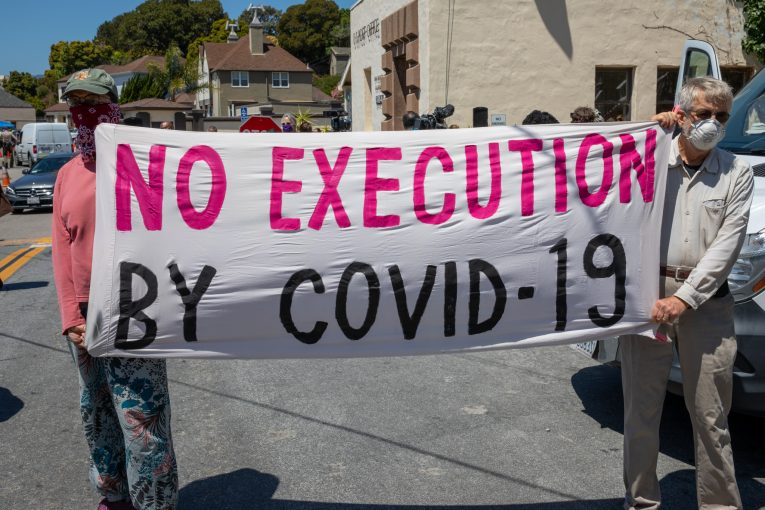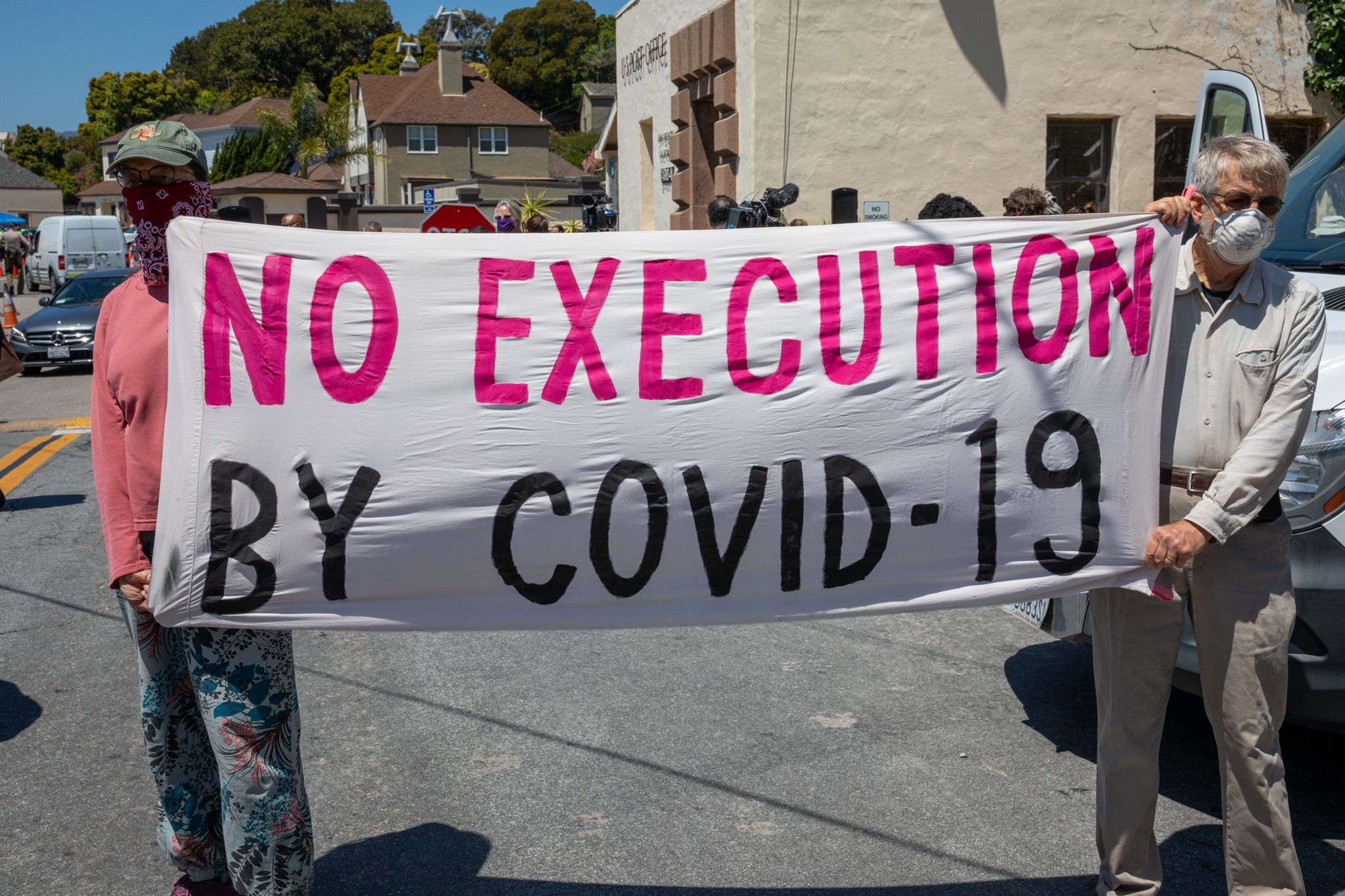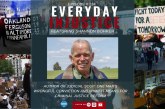
 By David M. Greenwald
By David M. Greenwald
Executive Editor
Marin County – “Respondent caused ‘the worst epidemiological disaster in California correctional history,’ a judge ruled in what could be considered a mixed verdict after a lengthy evidentiary hearing at the Marin County Superior Court this spring.
The ruling is tentative, pending a potential hearing on November 8. Over 300 plaintiffs brought forth this action after a failed transfer from CIM (California Institute for Men in Chino) resulted in a massive COVID outbreak at San Quentin Prison in June 2020.
However, the judge stops short of injunctive relief for the plaintiffs.
“To obtain injunctive relief,” Marin County Judge Geoffrey Howard writes in a 114-page tentative ruling, “petitioners must establish Respondent’s ‘current attitudes and conduct’ constitute deliberate indifference to a substantial risk of serious harm. This they have not done.”
Playing in favor of CDCR (California Department of Corrections and Rehabilitation) was ultimately the vaccine.
“(T)he vaccine changed the game for COVID-19 at San Quentin. With a nearly 80 percent inmate vaccination rate, COVID-19 has all but disappeared from inside the prison,” Judge Howard writes. “Although COVID-19 remains a risk within San Quentin, it appears at present no more than, and perhaps even less than, the risk faced by the community at large.”
He continues: “But even if COVID-19 continues to pose a substantial risk of serious harm, the combination of substantial population reduction, mitigation measures, and most importantly vaccine rollout, to every inmate in the prison shows that Respondent does not ‘knowingly and unreasonably’ disregard an objectively intolerable risk of harm. By offering the vaccine to all inmates, Respondent has responded reasonably and effectively with the best tool available to mitigate the harm.”
Thus, “Petitioners did not carry their burden to show that Respondent continues to unreasonably disregard a known serious risk by failing to take further measures such as further reducing the prison population.”
In this respect, “the court denies the petitions as moot.”
But that does not end the ruling. The Respondent “historically does not adequately safeguard inmates’ health and safety if left to its own devices. This conduct directly implicates inmates’ liberty interests. In addition, as demonstrated by the procedural history of this case, inmates will have difficulty presenting timely claims for resolution if similar circumstances recur.”
Judge Howard also pointed out the public safety implications here, noting, “Risks to inmates from disease do not always remain within the prison walls. As tragically demonstrated by the COVID-19 outbreak at the prison in 2020, prison staff and others who go in and out of the prison on a daily basis act as vectors into the surrounding community, threatening the nearby schools, homes, businesses, and the everyday life (and the lives) of the nearby residents.”
He writes, “In this way, infectious disease at San Quentin can adversely affect the health and safety of the broader community.”
Therefore, the judge admonished that CDCR caused “the worst epidemiological disaster in California correctional history.”
He writes, “In doing so, Respondent recklessly ignored what it knew then and concedes now—that COVID-19 posed a “substantial risk of serious harm to the health and safety of petitioners.””
CDCR’s conduct resulted in 75 percent of the San Quentin incarcerated population contracting COVID and 28 deaths, which he writes “implicates ‘matters of clear statewide importance’ relating to the ‘efficacy of the measures officials have already taken to abate the risk of serious harm to petitioner and other prisoners, as well as the appropriate health and safety measures they should take in light of present conditions.’”
In so doing, he writes, “During the 2020 COVID-19 outbreak at San Quentin, Respondent violated Petitioners’ rights under the Eighth Amendment to the United States Constitution and article I, section 17 of the California Constitution to be free of cruel and unusual punishment.”
He continued that CDCR “exhibited deliberate indifference to the admitted risk posed by COVID-19.”
First, CDCR violated “its own rules and procedures when it transferred the CIM inmates to San Quentin, knowing that those inmates posed a risk of introducing COVID-19 into San Quentin.”
Second, CDCR violated “its own rules and procedures during the intake and processing of the newly-arrived CIM inmates, in particular by ignoring obvious COVID-19 symptoms, failing to quarantine the transferees, failing adequately to screen them, and failing to test them until after they had already begun to infect the existing San Quentin population.”
Third, CDCR ignored “advice from its own medical professionals and CDC guidance by failing to provide adequate PPE, mixing sick and well inmates, failing to cohort inmates adequately, failing to enforce social distancing, and failing to provide adequate or timely testing.”
Finally, it ignored “Willis/MDPH’s recommendations without any basis other than that MDPH purportedly had no authority over Respondent.”
Judge Howard noted, “[n]umerous experts testified that crowding is the primary cause of the constitutional violations.”
The judge notes, “The evidence shows that compliance with the Urgent Memo’s population reduction recommendation in a timely fashion substantially would have reduced the scope and severity of the COVID-19 outbreak at San Quentin. Respondent knew about the Urgent Memo. It further knew that population reduction could effectively combat viral spread (as evidenced by its own population reduction efforts).”
The judge writes: “Respondent failed to comply with the Urgent Memo recommendation or engage any expert of its own” and added that CDCR had “the means at its disposal to quickly comply with the Urgent Memo’s recommendation; instead, it chose to litigate the matter while people died.”
He goes further, noting, “Respondent has offered no valid argument why it could not have complied with the Urgent Memo’s recommendation.”
Judge Howard writes: “The state could not comply with that order simply by moving inmates. It had to either release them or build more space. Here, by contrast, the problem involves only one antiquated prison, with architectural characteristics not shared by many other prisons in the state system.”
He later added, “While release is certainly one option to reduce the population at San Quentin, prison officials had several other options available to them. For example, they could have transferred inmates to a different prison…”
He concluded: “The failure to do so, or at least to make good faith efforts to do so, unreasonably exposed inmates, staff, and the surrounding community to a substantial risk of serious harm.”
The judge ruled, as a result, “The failure to reduce the population resulted in other constitutional deprivations of liberty. Because Respondent did not reduce the population as recommended, it effectively consigned hundreds of inmates to unwarranted, unnecessary, solitary confinement. And not just for a day or two.”
Furthermore, “Isolating COVID-positive inmates in the AC contributed to the spread of COVID-19 because inmates fear the AC. Using the AC as an isolation unit disincentivizes candid reporting of symptoms, an essential component of any effective COVID-19 mitigation strategy.”
The judge concludes: “No one knows how COVID-19 will behave in the future. No one knows what effect Respondent’s efforts to vaccinate the entire inmate population will have in combating any future outbreak. Petitioners have not – at this time – carried their burden to show current deliberate indifference warranting injunctive relief. However, the record raises serious questions about whether Respondent has learned the right lessons from the 2020 COVID-19 debacle at San Quentin.”
For the full tentative ruling, see here.






